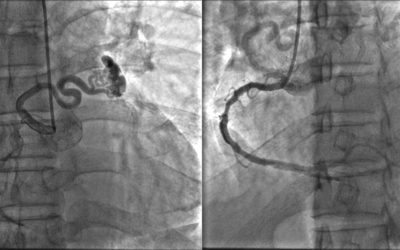Varicose Veins
Varicose Vein Treatment
Varicose veins are not attractive, but more than that, they can be a warning sign of conditions that can endanger your health.
These veins are conspicuous because of the way they bulge, swell and have a bluish tint. Varicose veins also have a twisted “ropy” appearance. And although varicose veins are fairly common, no one wants them, even when they aren’t particularly painful.
Are Varicose Veins Dangerous?
For the most part varicose veins are not dangerous, but having them may point to conditions that could be serious. Varicose veins are caused by weak or damaged vein walls and valves. These damaged valves cause blood to pool and even flow backwards. This improper flow causes the swelling veins and the distortion we see and call varicose veins.
When are Varicose Veins Concerning?
If your legs have a dull, achy feeling or if your legs feel heavy and you just can’t get around the way you used to, it could be varicose veins. Also, if you have frequent leg cramps, it could be caused by varicose veins. Any time you have frequent pain or discomfort because of these veins, you should consult a physician.
The Causes of Varicose Veins
Varicose veins can be traced back to age, weight, pregnancy, occupations that require long periods standing, or even simple heredity.
Can you have Varicose Veins in places other than your legs?
Varicose veins can occur in many parts of the body. While most common in the legs, varicose veins can also be found in the esophagus, stomach, liver, testicles and other places. In fact, hemorrhoids are actually a type of varicose vein.
Diagnosing Varicose Veins
Diagnosing varicose veins starts with a physical exam and a talk with your doctor about your symptoms, family history, activity levels, and your lifestyle practices. From there, your doctor may assess the health of your leg veins through ultrasound or other imaging tests including X-rays or computed tomography (CT) scans.
Treating Varicose Veins
Caring for your varicose veins will depend on the severity of the condition and how much it bothers you and interferes with your daily life. You may be able to treat the varicose veins with compression stockings and lifestyle changes or you may have to have some kind of procedure to eliminate the painful veins. The ultimate goal is to improve your quality of life and avoid further complications like skin ulcers or sores, deep vein thrombosis (blood clots), skin color changes, and bleeding. Bleeding from varicose veins is a medical emergency. Seek immediate help if this happens.
Varicose Vein Procedures
Sclerotherapy
A “sclerosing” solution is injected into the vein that causes the vein wall to swell, stick together and seal shut. This process stops the flow of blood, and the vein turns into scar tissue. In a few weeks, the vein should fade. The same vein may need to be treated more than once. Most patients can expect improvement after treatment. Sclerotherapy treatments do not eliminate diseased veins after on single treatment. Patients need to be compliant with the number of sessions that are recommended to obtain the best results.
Endovenous Therapy
The minimally-invasive endovenous approach constitutes a great advance for treating the deeper veining of the leg, the saphenous vein, when it does not function normally and causes varicose veins. This new method has replaced traditional stripping surgery for the vast majority of patients with severe varicose veins in the leg.
The therapy is called endovenous because it is performed within the vein itself, by the means of a catheter – a very thin, flexible tube. Once inside, the catheter sends out radiofrequency or laser energy that damages, shrinks or seals the vein wall.
Veins on the surface of the skin that are connected to the treated saphenous vein are then removed with a technique called microphlebectomy. Healthy veins around the closed vein restored the normal flow of blood in the leg. As this happens, symptoms from the varicose vein improve. The procedure is done in the office with local anesthesia. Patients are able to walk immediately after it is done, and generally return to normal activity in a couple of days. Endovenous treatment of varicose veins has been used for several years with positive results.
Find a Specialist
Call 760-957-3198
Dr. Vega Discusses Varicose Veins (English)
Dr. Vega Discusses Varicose Veins (Spanish)
Related Articles
No Results Found
The page you requested could not be found. Try refining your search, or use the navigation above to locate the post.
Related Services and Conditions
Outpatient PICC Line and Midline Service Placement
We work closely with referring physicians and healthcare providers to ensure seamless integration into the patient’s overall treatment plan. This collaborative effort enhances continuity and quality of care. Choosing our services for your vascular access needs means...
TCAR Procedure
TransCarotid Artery Revascularization (TCAR) Barstow Community Hospital offers a breakthrough technology called TransCarotid Artery Revascularization (TCAR) to treat patients with carotid artery disease. Although repairing the carotid artery carries a risk of stroke,...
End of Year Benefits
We understand the end of the year is a very hectic time. But while we look forward to the new, let's also take stock of how we can improve today -- and save! At Barstow Community Hospital we encourage you to take some time for yourself. Doing so could not only benefit...
Vascular Services
At Barstow Community Hospital, vascular surgeons diagnose, treat, and manage conditions in your arteries and veins (blood vessels). These specialists treat a range of health problems, from varicose veins and ulcers to life-threatening abdominal aortic aneurysms, and...
AV Fistula for Dialysis
If you have chronic kidney failure and need dialysis, you’ll first have a procedure to create a permanent access to your bloodstream (called vascular access surgery). This allows for a life-saving connection to the dialysis machine, which removes any toxins and other...
AV Graft for Dialysis
If you have chronic kidney failure and need dialysis, you’ll first have a procedure to create a permanent access to your bloodstream (called vascular access surgery). This allows your blood to travel between your body and the dialysis machine at a high-rate, so it be...
Treatment for PAD
With the often painful symptoms of PAD, even walking can be difficult, not to mention living the active life you love. At Barstow Community Hospital, the vascular health experts can help you start feeling like you again. We offer a full range of treatment options to...







